Appliance Parts
- Accessories
- Dishwasher
- Dryer
- Stove / Oven
- Microwave
- Refrigerator
- Washer
- See more... See less...
Lawn Equipment Parts
- Lawn Mower
- Chainsaw
- Blower
- Generator
- Air Compressor
- Lawn Tractor
- Pressure Washer
- See more... See less...
This 4th of July, remember the history behind the burgers, beers, and fireworks!
What's not to absolutely love about Independence Day?
It's usually a beautiful sunny day enjoyed by spending time with family and friends, eating delicious food, and watching breathtaking firework displays. It really is one of the best days of the year! But with all this excitement, the history of the 4th of July is sometimes forgotten.
As everyone probably knows, July 4th is the birthday of the United States of America and the anniversary of the adoption of the Declaration of Independence.
On June 11, 1776, the Second Continental Congress met in Philadelphia to write a document that would officially cut America's ties with Great Britain. The committee included Thomas Jefferson, Benjamin Franklin, John Adams,Roger Sherman and Robert R. Livingston.
John Hancock was the first to sign the Declaration. Since then, when people are asked for their "John Hancock", they are being asked to sign their names.
In 1776 when the first Independence Day was celebrated, John Adams, a signer of the document, said "I am apt to believe that it will be celebrated by succeeding generations as the great anniversary festival" with pomp and parade, with shows, games, sports, guns, bells, bonfires, and illuminations, from one end of this continent to the other, from this time forward for evermore."
And he was certainly right! 165 years later, in 1941, Congress declared July 4th a legal public holiday. 235 years later, in 2011, we are still celebrating this Holiday across the entire nation with fireworks, concerts, parades, great food, and lots of family time.
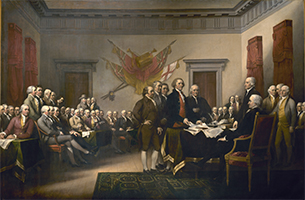

With our magnificent centuries old celebration, comes lots of event planning and food preparation. In your prep for this 4th of July holiday, take a few moments to remember the history behind the burgers, beers, and fireworks with this interesting look at what the colonial 4th of July celebrations must have been like. You might even want to add a touch of colonial into your 4th of July festivities this year, like leaving no ice-cream uneaten!
In colonial times the tools or appliances used for cooking and baking were vastly different and a single meal would take hours to prepare. In a colonial home there was a large fireplace that would be used for heating and for cooking.
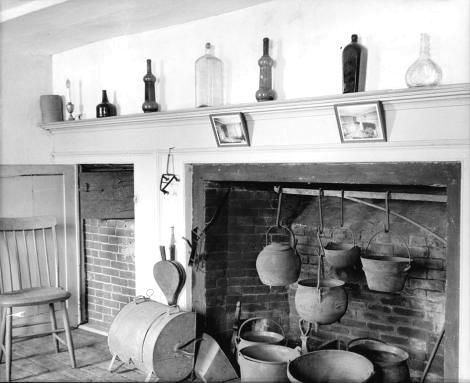

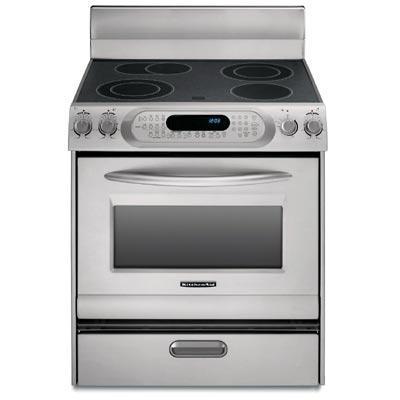
Pots and pans were made out of iron and were extremely heavy and hot. Women had to be very careful that their skirts would not ignite as they cooked or tended the fire. These days, our biggest concern when sitting around the camp fire is not to let our marshmallows burn!
Every morning, and especially on a celebratory morning such as the 4th of July, women would begin to prepare meals before dawn. They would build the fire, pick veggies and herbs from the garden, milk the cow, and gather eggs. These days, we simply walk into the kitchen in the morning with our eyes hardly open, take some ingredients out of the fridge, pick up a pan easily with one hand and turn a knob to start cooking.
Although the prep time and process for cooking and baking was exhausting in the colonial period they still enjoyed many of the same desserts as we do today! Pies (apple pie, pumpkin pie), cobblers, ice-cream, cakes (pound cake, jumbles & sugar cakes), cornbread, and popcorn sweetened with maple syrup were all very common and greatly enjoyed desserts.
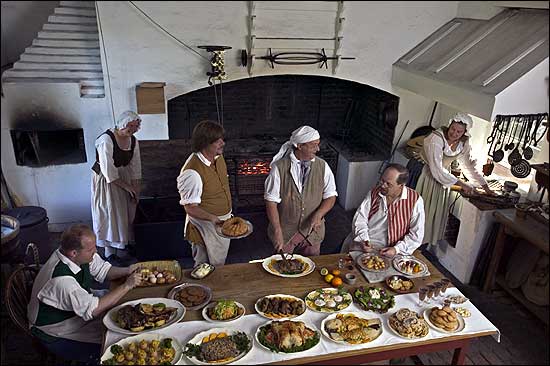
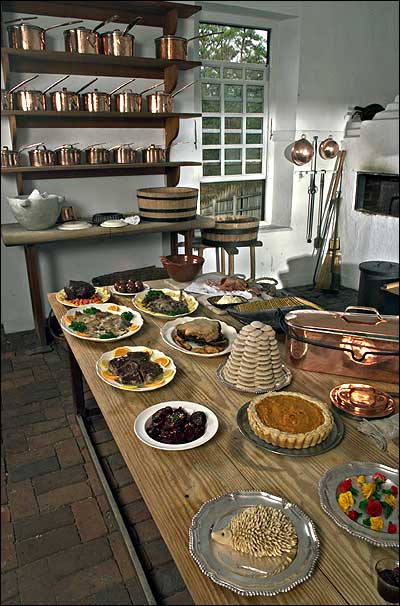
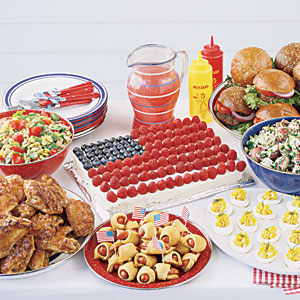
Luckily Benjamin Franklin, another founding father, discovered electricity in 1752 which allowed for wonderful inventions to that would help make colonial life much easier. But it wasn't until 1876 that the electric refrigerator was invented by Carl Von Linde. Although it is nearly impossible to fathom now, for almost 100 years all the delicious 4th of July leftover's had to be refrigerated in cool places that people found or made. The most common spots were underground where there were cold water springs. These "refrigerators" would be created from in a small space with cold water dripping from the ceiling and walls through small holes. Unfortunately, only the wealth actually had access to these early "refrigerators" and even still, food often spoiled. Most people had to rely on food preservation methods such as drying, dehydrating, canning and salting. Here are some examples:
- Butter: coated with salt (a preservative) and soaked. It would be desalted before using.
- Eggs: pickled (for long-term storage) or laid in straw but underground rooms were preferred.
- Meat & fish: salted (bacon), canned (corned beef), potted (pate), or dried (pemmican).
- Beverages:Beer, ale, wine, and cider were stored in underground rooms or the coolest part of the house.
- Ice cream:Underground rooms were not cold enough to store ice cream, so it all had to be eaten right away Beans: Salted, pickled and dried.
- Beans:Salted, pickled and dried.
While the 4th of July is celebrated across the entire country, historic cities like Boston and Philadelphia still attract huge crowds to this day. Historic scenes and ways of life are reenacted and the Declaration of Independence is read. It is important to remember what the adoption of the declaration has given us, and to be thankful for things like electrical appliances!
From everyone at PartSelect.com, we are wishing America a wonderful Independence Day and lots of celebrations!
Photo Credit:
- Fireworks
- Signing the Declaration of Independence
- Colonial Fireplace
- Modern fireplace
- 4th of July food
- 4th of July Colonial food and meal
- Search your model number to find:
- Genuine OEM parts guaranteed to fit
- Free manuals and guides
- Repair instructions and videos
































